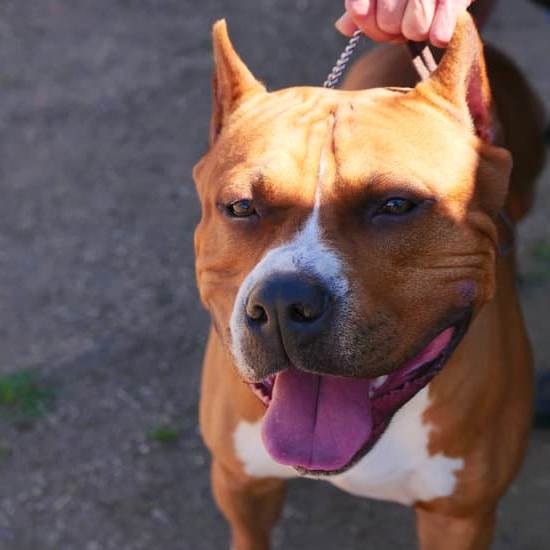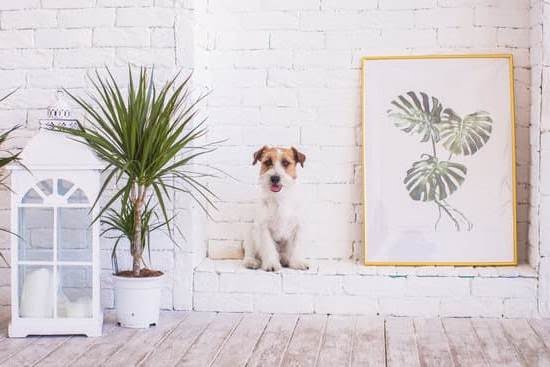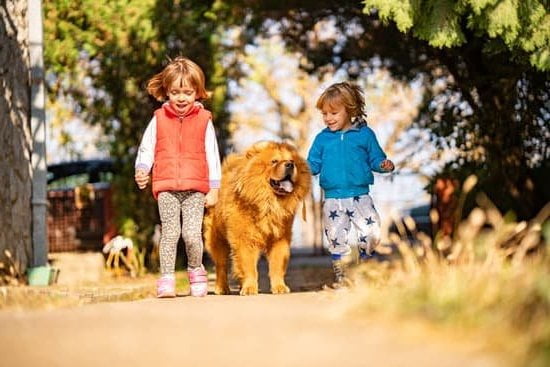Potty training a dog can be a challenging task, but when done correctly, it sets the foundation for a well-behaved and happy pet. While there are various methods and techniques to accomplish this feat, potty training a dog on a leash yields several benefits that make it worth considering. In this article, we will explore why potty training a dog on a leash is important and how it can lead to successful results.
One of the key advantages of leash potty training is the control and supervision it provides. By keeping your dog on a leash during potty breaks, you can guide them to the designated spot and prevent any wandering or distractions that may hinder their progress. Additionally, using a leash allows you to teach your dog to focus on specific commands and cues associated with elimination, creating clear communication between you and your pet.
Another reason why potty training on a leash is beneficial is the establishment of routine and consistency. Dogs thrive on structure, and using a leash helps in creating a predictable schedule for their bathroom needs. This routine not only helps in reinforcing good habits but also prevents accidents inside the house, minimizing clean-up efforts. Furthermore, repeating the same process consistently builds familiarity, making it easier for your dog to understand what is expected of them during potty time.
Overall, understanding the importance of potty training a dog on a leash sets the groundwork for effective training techniques that will be covered in this article. By recognizing the control, supervision, routine, and consistency offered by leash training, you can embark upon this journey with confidence knowing that you are setting up your furry friend for success in acquiring proper potty habits.
Let’s delve deeper into the basics of types of leashes for potty training and how to choose the right time and place to initiate this process.
Understanding the Basics
To successfully potty train a dog on a leash, it is essential to understand the basics of the different types of leashes that can be used for this purpose. The right leash can make all the difference in ensuring a smooth and effective potty training experience for both you and your dog.
- Standard Leash: The standard leash is the most common type used for everyday walks and training sessions. It typically ranges from 4 to 6 feet in length and is made from materials such as nylon or leather. A standard leash provides enough control and flexibility for guiding your dog during potty breaks, allowing them enough freedom to explore while still being within arm’s reach.
- Retractable Leash: Retractable leashes are a popular choice for many dog owners due to their adjustable length feature. These leashes can extend up to 25 feet or more, giving dogs more freedom to roam while still maintaining control over them.
However, it is important to note that using a retractable leash for potty training may not be ideal as it may allow too much distance between you and your dog, potentially leading to accidents or difficulty in redirecting them. - Long Line Leash: Long line leashes are an excellent option for potty training as they provide more freedom than a standard leash but still offer control over your dog’s movements. These leashes are usually between 15 to 30 feet long and are designed with lightweight materials such as cotton or nylon. They allow your dog to explore their designated potty area without feeling restricted while giving you the ability to guide them back if needed.
- Harness Leash: For dogs that tend to pull or have difficulty walking on a regular leash, using a harness leash during potty training can be beneficial. Harnesses distribute the pressure evenly across your dog’s body, reducing strain on their neck and throat area. This type of leash provides better control over your dog’s movements and can be helpful in preventing them from getting distracted during potty breaks.
When choosing a leash for potty training, it is important to consider your dog’s size, breed, and individual needs. Additionally, ensure that the leash is comfortable and secure for both you and your dog. By selecting the appropriate leash, you are setting the foundation for successful potty training on a leash.
Choosing the Right Time and Place
When it comes to potty training a dog on a leash, one of the key factors to consider is choosing the right time and place for your pup to do their business. Establishing a consistent potty routine will not only help in preventing accidents indoors but also teach your dog where they are allowed to eliminate. By following these guidelines, you can create an effective potty routine that will make the training process smoother and more successful.
Firstly, it is important to establish a regular schedule for taking your dog out on a leash. Dogs thrive on routine, so try to take them out at the same times every day. This could include first thing in the morning, after meals, before bedtime, and any other time when they may need to go. By doing this consistently, your dog will learn when they can expect their potty breaks and be less likely to have accidents indoors.
In addition to timing, selecting the right place for your dog’s potty breaks is crucial. Find a designated spot in your yard or outside area where you would like your dog to eliminate. By consistently bringing them there whenever they need to go, you are teaching them that this is the appropriate place for bathroom breaks. Using verbal cues such as “go potty” can also help associate this specific area with elimination.
Creating a successful potty routine also involves being observant of your dog’s behavior. Look for signs that indicate they need to go out urgently such as restlessness or circling. Additionally, pay attention to how long it typically takes for your dog to eliminate once outside – this will help you build an idea of how much time you should allocate for each potty break.
By choosing the right time and place for your dog’s potty breaks and establishing a consistent routine, you are setting them up for success in their leash training journey. Remember to be patient and consistent throughout the process, as it may take time for your dog to fully grasp the routine. With perseverance and positive reinforcement, you’ll soon have a well-potty trained dog who understands where and when to go on a leash.
| Choosing the Right Time and Place: Creating a Potty Routine on a Leash |
|---|
| – Establishing a regular schedule for potty breaks |
| – Selecting a designated spot for elimination |
| – Observing your dog’s behavior for signs of needing to go out urgently |
Preparing for Success
To ensure success in leash potty training your dog, it is important to have the necessary supplies on hand. These supplies will not only make the process more convenient for you but also create a comfortable and safe environment for your furry friend.
One essential supply for leash potty training is a durable and adjustable leash. It should be long enough to give your dog some freedom of movement but short enough to maintain control. A leash made from a material such as nylon or leather is ideal, as they are strong and easy to clean.
In addition to a leash, having poop bags or waste disposal bags is crucial for maintaining cleanliness during potty training. You want to be responsible and clean up after your dog when they go potty outside. There are biodegradable options available that are eco-friendly.
Another important supply for leash potty training is treats or rewards. Positive reinforcement plays a significant role in encouraging desired behavior from your dog. Treats can be used as incentives to help reinforce successful potty habits, making the learning process more enjoyable for your pet.
| Supply | Description |
|---|---|
| Durable Leash | An adjustable and strong leash made from nylon or leather. |
| Poop Bags | Bags specifically designed for waste disposal. |
| Treats/Rewards | Small and tasty snacks to reinforce positive behavior. |
By having these necessary supplies readily available, you will be well-prepared to begin the process of leash potty training with your dog. Remember, consistency and patience are key to achieving success, so be sure to have these supplies on hand every time you take your dog outside for their potty routine.
Step-by-Step Guide
Potty training a dog on a leash requires a step-by-step approach that focuses on building positive associations and establishing consistent routines. By following these techniques, you can effectively teach your dog to go potty while on a leash.
The first crucial step is introducing the leash to your dog in a positive manner. Begin by allowing your dog to sniff and investigate the leash while providing treats or praise. Gradually, attach the leash to your dog’s collar or harness for short periods of time indoors, rewarding them with treats and praise for calm behavior. This will help your dog become comfortable and associate the leash with positive experiences.
Next, it’s important to focus on teaching your dog proper potty cues through commands. Choose a specific command, such as “go potty” or “do your business,” and consistently use it every time you take your dog outside on the leash. Before going outside, give the command and wait patiently for your dog to eliminate. When they do, reward them with praise and treats immediately.
During walks, allow your dog time to sniff around and find a suitable spot to eliminate. Encourage this behavior by giving them verbal cues or signals associated with going potty. For example, you can say “find a spot” or use a hand signal like pointing downward. Once your dog starts eliminating, maintain a calm presence without disrupting their process.
Positive reinforcement plays a crucial role in successful potty training on a leash. Whenever your dog successfully goes potty outside while on the leash, reward them with their favorite treats or verbal praise immediately after they finish eliminating. This reinforces the connection between going potty in the designated area and receiving rewards.
By following these step-by-step techniques, you can effectively train your dog to go potty while on a leash. Remember to be patient and consistent during the training process, as it may take time for your dog to fully grasp the concept. Stay positive and celebrate each successful potty elimination, as this will motivate your dog and foster a stronger bond between you both.
Troubleshooting Common Challenges
Leash Pulling and Distractions: Keeping Your Dog Focused
One common challenge that dog owners may encounter during leash potty training is leash pulling and distractions. Dogs are naturally curious creatures and may become easily distracted by sights, sounds, and smells while on a walk. This can make it difficult to keep them focused on their potty routine. However, there are strategies that can help overcome this issue.
To address leash pulling, it is important to teach your dog proper leash manners. Start by using a shorter leash or a retractable one with the lock feature activated. This will give you better control over your dog’s movements.
Whenever your dog starts to pull on the leash, stop walking immediately and wait for them to come back towards you or release tension on the leash. Once they do so, reward them with praise or a treat. Consistency is key in teaching your dog not to pull on the leash, so be patient and persistent in reinforcing this behavior.
Distractions can be minimized by choosing less busy areas for potty training walks, especially in the initial stages of training. Avoid places with heavy foot traffic or where other dogs commonly frequent until your dog becomes more comfortable with the routine. It can also be helpful to use verbal cues or commands to redirect your dog’s attention back to you when they start getting distracted. Practice these commands in a controlled environment before attempting them in more distracting locations.
Accidents and Clean-Up: Dealing with Mishaps
Despite our best efforts, accidents may still happen during leash potty training. It is important not to punish your dog for accidents as this can create fear or confusion around the potty training process. Instead, focus on effectively dealing with mishaps so that both you and your dog can move forward positively.
When an accident occurs indoors, clean it up thoroughly using an enzyme-based cleaner designed specifically for pet accidents. This type of cleaner helps to eliminate odors that might attract your dog back to the same spot. Additionally, do not scold or reprimand your dog as they may not understand why they are being punished.
It is crucial to remain calm and patient during this time. Accidents are a normal part of the potty training process, especially in the early stages. Instead of dwelling on the accident, focus on preventing future mishaps by closely monitoring your dog’s behavior and providing more frequent potty breaks.
Consistency and Patience: Maintaining a Successful Training Routine
Consistency and patience go hand in hand when it comes to overcoming common challenges in leash potty training. Dogs thrive on routine, so it is essential to maintain a consistent schedule for potty breaks and walks.
Stick to the established routine regardless of external factors such as weather or personal schedules. Consistently taking your dog out at the same times each day will help them develop a better understanding of when and where they should eliminate.
In addition to consistency, patience is vital during this process. Remember that every dog learns at their own pace, and there will inevitably be setbacks along the way. Avoid getting frustrated or showing impatience towards your dog. Instead, offer encouragement and rewards for small successes. Over time, with consistency and patience, you will overcome these challenges and successfully potty train your dog on a leash.
Gradual Independence
Moving Towards Off-Leash Potty Training
After successfully potty training your dog on a leash, you may be wondering how to gradually transition to off-leash potty training. This section will provide you with some guidance on how to achieve this milestone with your furry friend.
Slowly Reducing Reliance on the Leash
Once your dog has mastered potty training while being leashed, it’s time to start giving them a taste of freedom. Begin by allowing them some supervised off-leash time in a secure and controlled environment such as a fenced yard or an enclosed space. Make sure there are no distractions that might divert their attention away from using the designated potty area.
During this phase, keep a close eye on your dog and be ready to redirect them back to the potty spot if they veer off course. If they successfully eliminate in the right location, remember to praise and reward them for their good behavior. Gradually increase the length of time your dog spends off-leash while remaining attentive and observant of their bathroom habits.
Repeating the Training Process in New Environments
As your dog becomes more confident and reliable with off-leash potty training in familiar surroundings, it’s important to introduce new environments. Dogs don’t automatically generalize their training from one place to another, so it’s essential to repeat the entire potty training process when changing locations.
Start small by introducing one new environment at a time. Keep your dog leashed until they become comfortable and familiar with the new surroundings. Reinforce proper potty behavior as you did during initial leash training, using verbal cues and positive reinforcement. As your dog proves consistent in various environments, you can gradually reduce reliance on the leash until they no longer need it during potty breaks.
Remember that each dog is unique, and some may require more time than others to reach this stage of off-leash potty training. Patience, persistence, and positive reinforcement will be key factors in your dog’s success.
By gradually reducing reliance on the leash and repeating the training process in new environments, you can help your dog develop the independence and reliability needed for off-leash potty training.
Additional Tips and Tricks
In addition to the steps mentioned above, there are some additional tips and tricks that can enhance your dog’s off-leash potty training experience:
- Using Verbal Cues and Signals for Efficient Communication: Teach your dog specific verbal cues or signals that indicate it’s time to go to the bathroom. Consistency in using these cues or signals will help them understand what is expected of them.
- Incorporating Positive Associations with the Potty Spot: Make the designated potty spot a positive place for your dog. Use treats or praise when they eliminate in that spot, creating a positive association with going to the bathroom there.
- Seeking Professional Help: If you encounter challenges or feel unsure about how to proceed with off-leash potty training, don’t hesitate to seek guidance from a professional dog trainer. They can provide valuable advice tailored to your dog’s individual needs.
With gradual independence and proper reinforcement, you can celebrate the success of having a well-potty trained dog who no longer needs a leash for bathroom breaks. Off-leash potty training not only grants your dog more freedom but also deepens the bond between you and your furry companion.
Additional Tips and Tricks
When it comes to leash potty training, there are a few additional tips and tricks that can help enhance your dog’s overall experience and make the process more efficient. These tips can be incorporated into your training routine to further reinforce positive behaviors and ensure successful potty habits on a leash.
One effective tip is to use verbal cues and signals during the training process. Giving your dog a specific command or cue when it’s time to go potty can help them understand what you expect from them.
Consistently using the same cue, such as “go potty” or “do your business,” will eventually create an association between the command and the action. This will make it easier for your dog to understand what you want them to do when you give the cue, even while on a leash.
Another helpful strategy is incorporating positive associations with the designated potty spot. Dogs are creatures of habit, so if they have a positive experience in a specific area, they will be more likely to return there when it’s time to go potty.
You can achieve this by providing treats or rewards after your dog successfully eliminates in the designated spot while on their leash. Over time, this positive reinforcement will strengthen their inclination to use that particular area for elimination.
In some cases, seeking professional help may be necessary, especially if you’re facing challenges or difficulties during the leash potty training process. A certified dog trainer can provide valuable guidance and expertise tailored specifically to your dog’s needs. They can assess any underlying issues or behavior problems that may be hindering progress and offer effective solutions to address them.
By implementing these additional tips and tricks into your training regimen, you can enhance your dog’s leash potty training experience and improve overall success. Remember to be patient and consistent throughout the process as every dog learns at their own pace. With time and effort, you’ll celebrate the accomplishment of having a well-potty trained dog on a leash.
Conclusion
In conclusion, potty training a dog on a leash is an essential skill that can greatly improve the quality of life for both the dog and their owner. By understanding the basics of leash potty training, choosing the right time and place, preparing for success with necessary supplies, and following a step-by-step guide with techniques such as introducing the leash and focusing on commands, pet owners can set themselves up for success.
Troubleshooting common challenges is also important, as it allows owners to overcome issues such as leash pulling and distractions, accidents and clean-up, and maintaining consistency and patience.
As pet owners progress in their leash potty training journey, they will eventually be able to move towards off-leash potty training. This involves gradually reducing reliance on the leash and repeating the training process in new environments. Additionally, there are additional tips and tricks that can enhance the dog’s leash potty training experience, such as using verbal cues and signals for efficient communication, incorporating positive associations with the potty spot, and seeking professional help when necessary.
Overall, successfully potty training a dog on a leash requires dedication, consistency, patience, and positive reinforcement. It is important to celebrate each milestone achieved along the way and remember that accidents may happen. With time and practice, pet owners can have a well-potty trained dog on a leash who understands proper potty cues and habits.
This not only creates a cleaner environment but also strengthens the bond between owner and dog through effective communication and mutual understanding. So take up your leash today and embark on this rewarding journey of potty training your beloved canine companion.
Frequently Asked Questions
Why won’t my dog go potty while on a leash?
There can be several reasons why a dog may refuse to go potty while on a leash. One common reason is that the dog may feel restricted or uncomfortable when wearing a leash, which can make it difficult for them to relax and eliminate.
Additionally, certain dogs may have had negative experiences in the past while on a leash, such as being scolded or punished while attempting to go potty, leading them to associate the leash with fear or anxiety. It’s also possible that the dog simply hasn’t been properly trained or acclimated to going potty on a leash and needs further positive reinforcement and patience from their owner.
Should a puppy be on a leash when potty training?
Yes, it is generally recommended to have a puppy on a leash during potty training. Leashing your puppy can help create boundaries and prevent them from wandering off or getting distracted while outside. By keeping them close on a leash, you can also more easily monitor their behavior and quickly guide them to the appropriate location for elimination.
Leash training during potty training provides consistency and helps teach puppies that going outside on a leash is the expected routine for bathroom breaks. As they grow older and become more reliable with their potty habits, the need for constant leashing may diminish.
What is the hardest dog to potty train?
While each individual dog can present unique challenges during potty training, some breeds are often considered more challenging in this aspect. Small breeds such as Chihuahuas, Dachshunds, or Bichon Frises are sometimes mentioned as harder to potty train due to their stubbornness and independent nature.
Additionally, some terrier breeds like Jack Russell Terriers may be known for their higher energy levels and tendency towards being less easily motivated by traditional training methods during housebreaking. However, it’s important to remember that every dog is different, and successful potty training depends heavily on consistent positive reinforcement techniques tailored to each specific dog’s needs rather than solely relying on breed characteristics.

Welcome to the blog! I am a professional dog trainer and have been working with dogs for many years. In this blog, I will be discussing various topics related to dog training, including tips, tricks, and advice. I hope you find this information helpful and informative. Thanks for reading!





